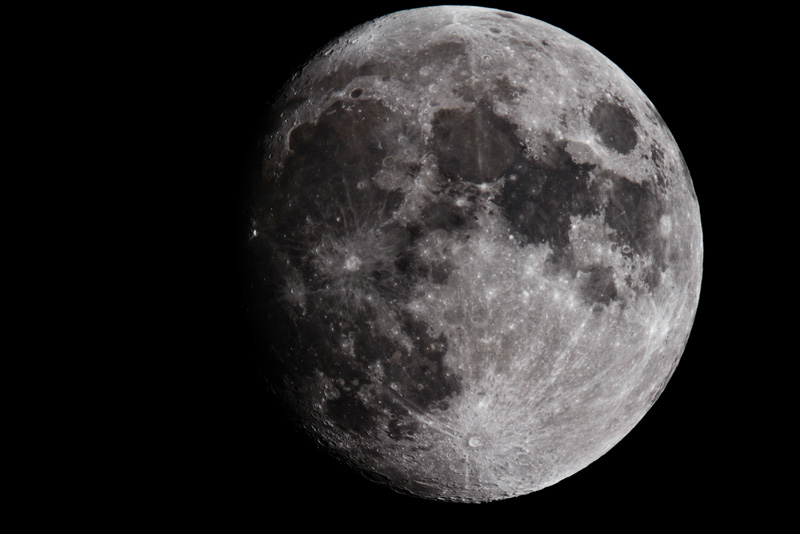How the Moon Affects the Nocturnal World

Plenty of myths and fables have tried to explain the loony effects the moon seems to have on animals, but far fewer scientific reports have formally addressed the issue. Now, in a comprehensive review, scientists have found the indirect, and sometimes direct, ways the lunar cycle drives animal behaviors.
The review also suggests light pollution, which can block out some of the moon's glow, may disrupt natural patterns associated with Earth's only satellite.
Those who believe in true lunacy — the craziness stirred in animals by the lunar cycle — will be disappointed to learn that many animals simply adjust their behaviors in response to changes in light levels and tides, rather than to anything supernatural. Still, other behaviors do follow more mysterious circadian clocks controlled by the lunar cycle, the team reports today (July 2) in the journal the Proceedings of the Royal Society B. [6 Wild Ways the Full Moon Affects Animals]
"The moon may act as a synchronizing cue between individuals, as a cue for other environmental parameters — spring tides, food availability — or simply allow animals to use vision," said Noga Kronfeld-Schor, a biologist at Tel Aviv University and co-author on the report. "The behaviors it affects are wide and diverse, ranging from long-term processes such as timing reproduction and migration to direct response to light levels."
Animal lunacy
In order to understand the broad effects of natural moonlight on nocturnal creatures, the team organized the effects into the categories of reproduction, communication and foraging/predation, and addressed each of these categories across a variety of animal groups.
One of the most stunning behaviors the team covers in their report is a moon-induced mass-spawning event that occurs every December in Australia's Great Barrier Reef. Each year, hundreds of species of coral spawn together at the same time. A variety of environmental factors — including temperature, salinity and food availability — likely contribute to the timing of the event, but the level of moonlight appears to be the main trigger. When the light is right, hundreds of corals release their sperm and eggs in synchrony, increasing the probability of fertilization.
Get the world’s most fascinating discoveries delivered straight to your inbox.
In other cases, the moon's effects are more mundane. Communication patterns, for example, change with increased light availability at night for certain species of birds. Eagle owls use white throat feathers to communicate with other birds at night, and tend to increase this activity during nights surrounding the full moon when their feathers are more visible. Other owls, on the other hand, avoid activity during full moons, a behavior that scientists think helps them avoid predators.
Reducing activity to avoid predation during periods of brighter light is a common way that land animals react to the lunar cycle. Marine animals, however, often react more to the opportunities associated with changes in tides. Some species of sea turtles, for example, wait for the full moon's high tide to ride waves onto shore and lay their eggs far up on the beach.
Doodlebugs — the larvae of dragonfly-like insects called antlions — actually dig larger holes for trapping insect prey during full moons. This changed behavior may be the result of their insect prey becoming more active under the light of the full moon, making the extra effort of digging larger holes pay off.
Moon's effects still mysterious
Still, many details of the moon's effects on animal behavior remain largely unknown due to a low volume of research, especially compared with the much broader base of research covering the effects of the solar cycle on animals.
"As humans, we rely on vision and are less aware of the nocturnal world," said Kronfeld-Schor. "Many of us are afraid of night creatures, and it is more difficult to see and study them."
The potentially disruptive role that artificial light plays in these cycles also remains poorly understood, though preliminary studies have found that in the presence of light pollution, some nocturnal animals are less likely to forage and follow other natural patterns of activity.
"Light pollution is expected to have similarly wide and diverse effects from the individual to community level, and on invertebrates as well as vertebrates," Kronfeld-Schor told LiveScience. "The effects are just beginning to be revealed."
The team hopes their review will provide a stepping stone for future research in nocturnal life, as well as the effects of light pollution on nocturnal behaviors and circadian rhythms.
Follow us @livescience, Facebook & Google+. Original article on LiveScience.com.

